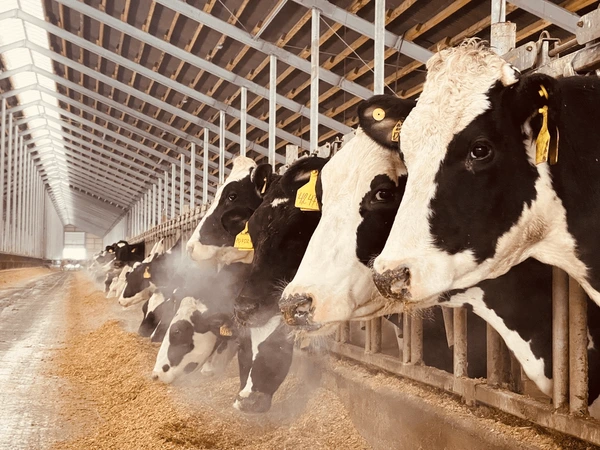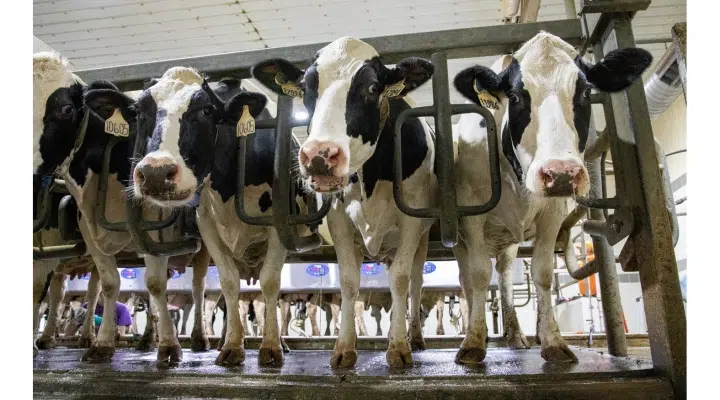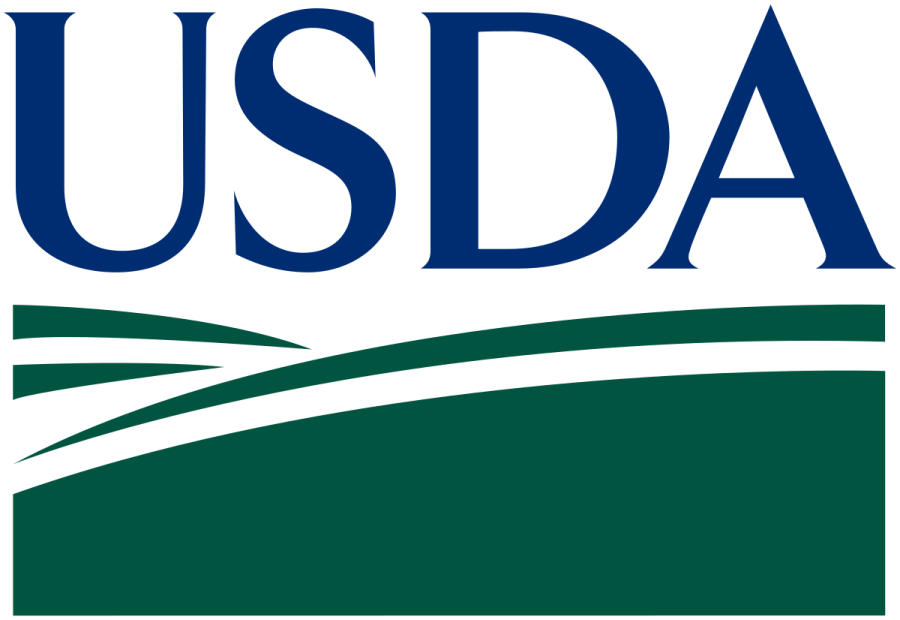Stabenow’s Senate Farm Bill proposal might change the game for dairy farmers. How does it differ from the House bill? Find out the primary distinctions.
Summary:
The unveiling of the Senate Farm Bill by Agriculture Committee Chair Debbie Stabenow marks a crucial development for the agricultural sector, especially for dairy farmers. This five-year Rural Prosperity and Food Security Act proposes an allocation of $39 billion to fortify farm safety nets, extend nutrition assistance, and enhance rural living conditions. Noteworthy deviations from the House bill lie in measures such as an automatic adjustment for ARC or PLC program payments and a fixed increase in reference prices by 5%—a conservative raise compared to the House’s 10-20% increment. While some proposals, like the Emergency Relief Program’s permanency, bode well for the farm community, others introduce financial restrictions that may impact high-earning landowners adversely. As the political winds shift, the challenge lies in navigating these legislative changes and understanding their long-term impact on dairy production and prosperity. The Farm Bill is a crucial legislative package that impacts the agricultural sector, ensuring economic stability and regulatory frameworks. It provides financial safeguards, market access, and nutrition assistance to dairy farmers, ensuring their operations are sustained amidst fluctuating market conditions. The Senate farm bill proposes $39 billion in new resources to support farming operations and the rural economy, strengthening the farm safety net with $20 billion in emergency relief. The House bill proposes a 10% to 20% increase in reference prices, potentially providing more financial support to dairy farmers. Critics argue that the bill’s decision to allow farmers to choose between the 2023 or 2024 ARC or PLC programs could provide immediate financial relief.
Key Takeaways:
- The Senate Farm Bill proposed by Debbie Stabenow introduces $39 billion in new funding to bolster the farm safety net, improve nutrition access, and enhance rural quality of life.
- Significant distinctions exist between the Senate and House bills regarding ARC and PLC programs, notably with automatic selections for better payment options but with more restricted reference price increases in the Senate’s version.
- There are targeted base acre updates favoring underserved and disadvantaged farmers, set to be capped at 160 acres from 2025 to 2029, posing potential limits on production agriculture.
- The Senate proposal makes Emergency Relief Programs permanent starting in 2025, aiming to reduce reliance on ad hoc disaster relief efforts.
- The Adjusted Gross Income limit is lowered from $900,000 to $700,000, impacting eligibility across tenant farmers and landowners and potentially limiting financial support for larger agricultural operators.
- Sectors like the National Pork Producers Council criticized the bill’s omission of California’s Proposition 12 standards, reflecting dissatisfaction with perceived gaps in addressing regional agricultural standards.
- Concerns persist regarding the bill’s progression in a lame-duck Congress, with opposition highlighted by Senate Ag Committee Ranking Republican John Boozman’s reaction, indicating a polarized legislative landscape.
- Experts like John Newton express cautious optimism about the Congressional Budget Office’s ability to score the bill and progress its legislative journey before time runs out.

For many in the dairy industry, the future of farming is being shaped by legislation. The Farm Bill, a cornerstone of agricultural policy, not only impacts financial security for farmers but also sets the trajectory for years to come. The recent Senate and House bills presentations reveal divergent paths, leaving the farming community to navigate potentially transformative changes. The Senate and House bills are not just different in numbers; they embody contrasting ideologies toward agricultural support and modernization. The Senate’s plan focuses on streamlining assistance programs and modernizing reference pricing, which could lead to more efficient and targeted support for dairy farmers. On the other hand, the House bill proposes significant budget overhauls and constraints, potentially limiting the resources available to dairy farmers. These differences are critical to dairy farmers and could significantly impact their operations.
Stabenow’s Legacy: A Lifeline for Dairy Farmers in the Senate Farm Bill
The farm bill is a crucial legislative package that directly impacts the agricultural sector, shaping economic stability and regulatory frameworks. It serves as a lifeline for dairy farmers, offering financial safeguards, market access, and nutrition assistance to sustain their operations despite fluctuating market conditions. The bill addresses the spectrum of agricultural needs, from crop insurance to conservation programs, ensuring that dairy farmers receive the necessary support to thrive.
Senator Debbie Stabenow, the Chair of the Senate Agriculture Committee, played a pivotal role in developing the Senate farm bill proposal. Her tenure and leadership have significantly influenced agricultural policy, leveraging her expertise to introduce reforms to enhance the farm safety net, ensure rapid emergency relief, and bolster rural prosperity. Stabenow’s influence is evident in the bill’s crafting, which seeks to modernize existing programs while introducing impactful changes tailored to current agricultural challenges. Her commitment to the agricultural sector and understanding its needs have shaped the bill, making it a potential lifeline for dairy farmers.
Senate Bill Highlights
- $39 billion in New Resources: This significant allocation propels the agricultural sector forward. This substantial investment is expected to bolster farming operations and support the rural economy.
- Strengthening the Farm Safety Net: With an infusion of $20 billion, the bill aims to solidify a financial safety net for farmers. This will ensure swift and reliable access to emergency relief, a critical component as environmental uncertainties loom large.
- Focus on Permanent Disaster Assistance: The bill seeks to alleviate the reliance on ad hoc disaster assistance programs, which often suffer delays and inconsistencies, by establishing ongoing disaster assistance mechanisms.
“They are automatically going to allow farmers to get the highest of either 2023 or 2024 ARC or PLC, so that is helpful,” noted Farm CPA Paul Neiffer, highlighting an automatic adjustment that lends flexibility to farmers.
- ARC and PLC Program Adjustments: A standardized 5% increase in reference prices differs from the House’s proposed 10-20% hike, and a refined set of limitations on payment caps accompanies it.
“They did expand the payment limit for the ARC up to 12.5 percent from the current 10%, but then they put a 15% restriction on the PLC,” Neiffer explained, underscoring a nuanced structure intending to balance financial support and fiscal discipline.
House Bill Comparison:
The House bill notably diverges from Stabenow’s Senate proposal, especially regarding adjusting reference prices and payment limits. While the Senate bill proposes an overall 5% increase in reference prices, the House bill ambitiously suggests a 10% to 20% increase. Such a substantial elevation in reference prices under the House legislation could provide dairy farmers with more financial support, significantly impacting their bottom line, especially when market conditions become unfavorable.
Additionally, the payment limits reveal stark differences. The Senate bill expands the ARC program payment limit to 12.5%, compared to a 15% cap on PLC, contrasting with the House bill’s more generous terms. This distinction might lead to varying levels of support for dairy farmers under economic strain, highlighting a critical point of divergence between the two legislative bodies.
For the broader agricultural community, these divergent methods carry significant implications. Given the differing levels of financial support available to farmers, those advocating for increased reference prices and higher payment thresholds may see the House bill as a more favorable option. However, it is critical to consider that aligning these payment structures within legislative boundaries could influence the overall agricultural policy landscape, affecting everything from market stability to individual farmer resilience across the sector.
Expert Insights: Navigating the Senate Farm Bill’s Impact on Dairy Farmers
When analyzing the impact of the Senate Farm Bill on dairy farmers, the insights of industry experts like Paul Neiffer and John Newton provide a crucial perspective. Neiffer’s commentary highlights the Senate bill’s nuanced approach to the ARC (Agriculture Risk Coverage) and PLC (Price Loss Coverage) programs, which are critical safety nets for farmers. The Senate’s decision to automatically allow farmers to choose the higher benefit between the 2023 or 2024 ARC or PLC could deliver immediate financial relief and flexibility, essential for dairy farmers facing fluctuating market conditions and input costs.
However, Neiffer acknowledges that while the Senate bill raises the reference prices uniformly by 5%, it remains less aggressive than the House proposal, which suggests an increase of 10 to 20%. This conservative adjustment in the Senate bill could mean less immediate financial support than the House proposal, potentially impacting the economic stability of dairy operations that rely on these benchmarks to safeguard against market volatility. On the other hand, the Senate bill’s approach could provide more predictable and sustainable support, reducing the risk of market distortions and ensuring a more balanced distribution of resources. Dairy farmers must weigh these potential benefits and drawbacks when considering the implications of the Senate bill for their operations.
On the other hand, John Newton is optimistic about the bill’s potential to progress through Congress despite challenges. He emphasizes the importance of scoring the bill by the Congressional Budget Office, which could facilitate swift legislative action, which is crucial when dairy farmers look for stability in policy to guide future planning. Nevertheless, the reduction in Adjusted Gross Income (AGI) limits from $900,000 to $700,000 could be a point of contention, as it may limit access to crucial supports for more extensive dairy operations whose landowners exceed the new threshold.
The differences between these bills highlight the ongoing challenge of balancing proportional support for small and large-scale operations. Dairy farmers navigating these policies must pay close attention to how these legislative developments directly affect their planning and operational strategies. Although progress may be slow, the involvement and advocacy of industry experts suggest active discussions that could shape the outcomes to benefit dairy farming’s diverse needs.
Criticism from Key Figures: A Storm of Dissent Strikes the Senate Farm Bill
- Criticism from Key Figures: The Senate Farm Bill has been criticized by notable figures in the agricultural sector. John Boozman, the ranking Republican on the Senate Agriculture Committee, voiced strong opposition, referring to the proposal as an “11th-hour partisan proposal.” His sentiment reflects a broader dissatisfaction within the agricultural community, highlighting a perceived delay and lack of bipartisan collaboration. Boozman’s critique underscores the urgency and frustration surrounding the bill’s timing and potential impact on farmers.
- National Pork Producers’ Concerns: The National Pork Producers Council expressed disappointment with the bill. Their primary concern is the bill’s failure to address California’s Proposition 12 pork production standards. This oversight is seen as a significant gap, particularly for the pork industry, which continues to grapple with the implications of these standards for production practices and market access. The omission highlights a disconnect between the bill’s provisions and specific agricultural sector needs.
- Political Hurdles: Advancing the Senate Farm Bill in a “lame duck” Congress presents formidable challenges. With time and the legislative calendar rapidly dwindling, securing the necessary support and momentum to pass the bill is challenging. Despite efforts to expedite the bill’s progress, the divided political landscape complicates consensus-building. These dynamics raise questions about the bill’s viability, especially amidst increasing partisanship and competing legislative priorities.
The Bottom Line
The Senate Farm Bill, spearheaded by Senator Stabenow, presents notable shifts, such as moderated changes in ARC and PLC programs, adjusted payment limits, and a permanent emergency relief system. Despite these potential advancements, the bill raises significant questions, particularly concerning lowered AGI limits and limited proposals around base acres, which might challenge the existing agricultural landscape. However, this bill intends to reshape the support framework for farmers despite missing the mark for some.
As dairy farmers nationwide consider the potential impacts of these legislative changes, we must ask: How will these policy shifts shape the future of American dairy farming? Will the Senate’s efforts suffice to meet the evolving needs of this critical sector, or do these revisions merely complicate matters for farmers and policymakers?
We invite you to join the conversation. Share your insights and experiences with us: How might these proposals affect your farming operations, and what additional measures are necessary for a more robust and responsive farm policy? Please leave your thoughts in the comments below, and let’s engage in a discourse that could shape the future of our industry.
Learn more:
- Lawmakers Hopeful Yet Cautious: Future of the 2024 Farm Bill Hangs in the Balance
- Major Updates in the 2024 House Farm Bill: What Farmers Need to Know
- Trump vs Biden: Who is the Best Presidential Choice for Dairy Farmers?
 Join the Revolution!
Join the Revolution!
Bullvine Daily is your essential e-zine for staying ahead in the dairy industry. With over 30,000 subscribers, we bring you the week’s top news, helping you manage tasks efficiently. Stay informed about milk production, tech adoption, and more, so you can concentrate on your dairy operations.







 Join the Revolution!
Join the Revolution!








